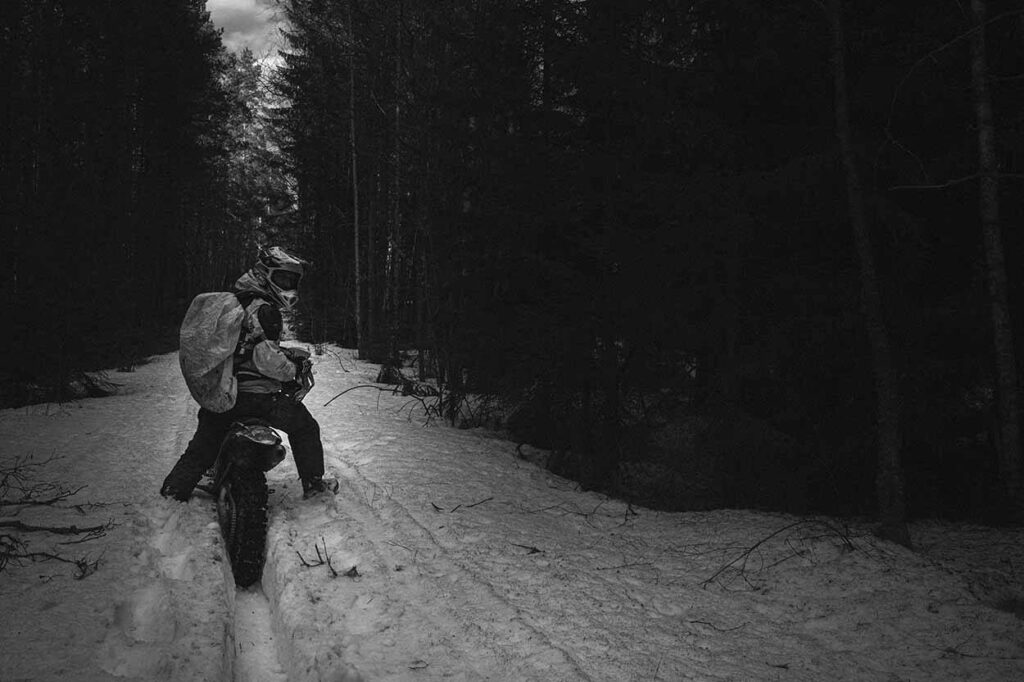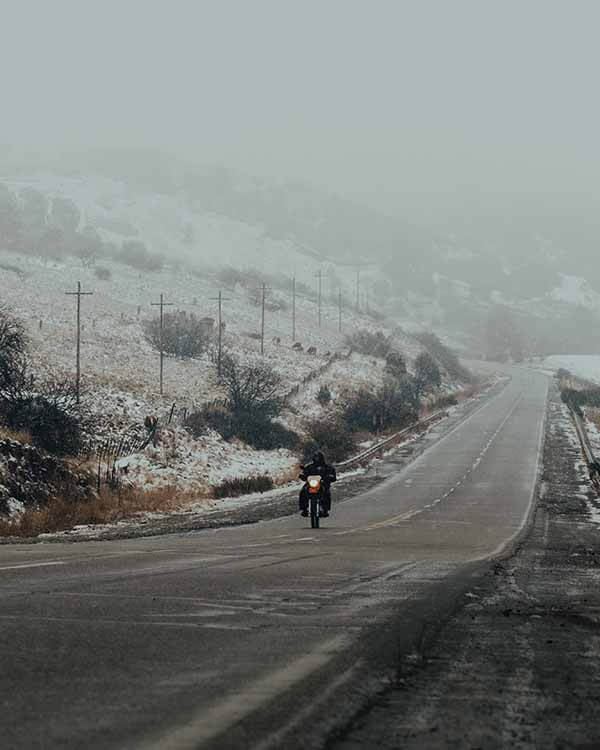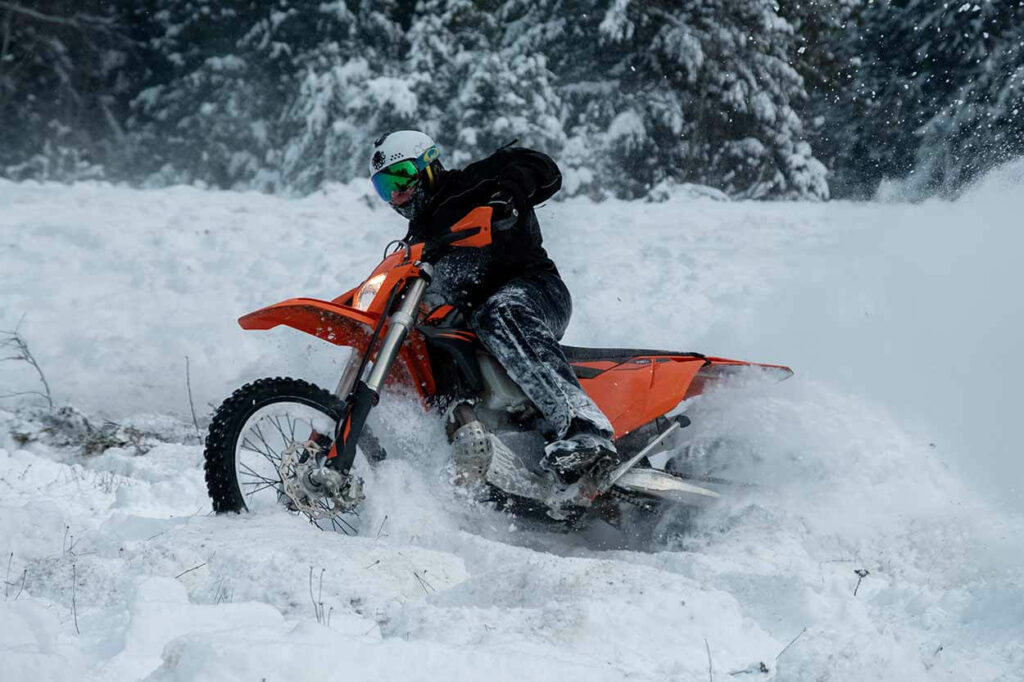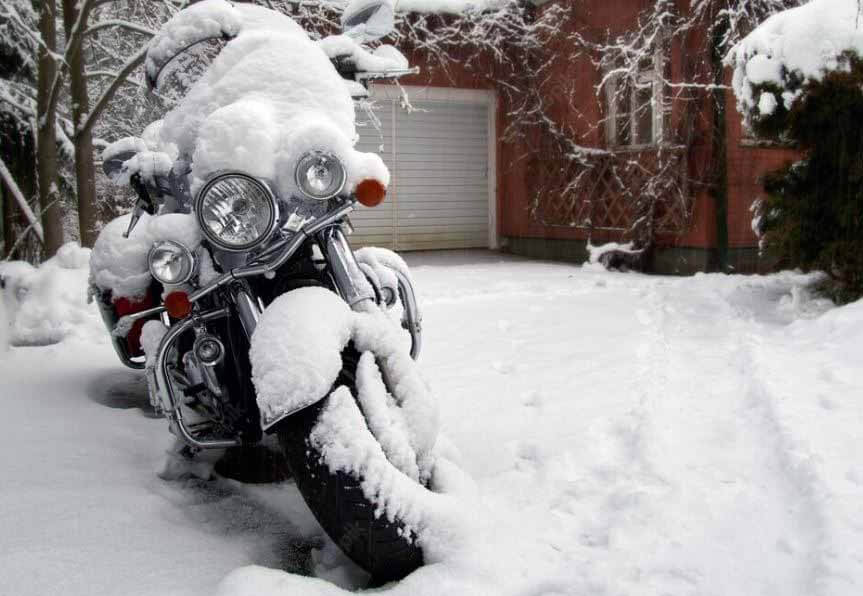Although it’s not so much of an issue for those in the southern antipodes, for those motorcyclists living in the northern hemisphere, the winter months are not a friend. Like the bear, most motorcyclists in the northern regions of the world go into hibernation over the winter months.
While there will always be that one guy who rides at below-freezing temperatures, for most of us when the days start getting shorter, it’s a sure sign that it’s time to put the motorcycle away for another year.
So, How Cold Is Too Cold to Ride a Street Bike?
The General Rule
There’s no hard and fast rule of when it’s too cold to ride a street bike motorcycle. To a large degree, it comes down to personal preference and what you are comfortable with. That said, the general rule is usually that when the temperature is below freezing (32°F or 0°C), it’s time to hang up your leathers for the year.
There are a number of reasons for this approach, including:
- Motorcycle size: Ice begins to form at temperatures below zero, and as a small vehicle, a motorcycle is a lot more susceptible to these conditions than other larger vehicles on the road.
- Windchill factor: There’s no hiding the wind on a motorcycle and at temperatures below zero, the wind chill factor is likely to mean it feels a lot colder on the back of a motorcycle. The cold air makes the heat leave your body very quickly.
- Hypothermia: At these temperatures, especially when the wind chill is taken into account, you become susceptible to hypothermia on the back of a motorcycle.
- Distraction: When you are cold, it’s a lot harder to concentrate. This means that you are more likely to be distracted, which increases the likelihood of an accident.
- Icy roads: With the roads icy, it’s a lot more difficult to maintain control of your motorcycle. This increases the risk of you coming off the bike.
- Less control: When you’re cold, your hands and feet are often the worst affected. This means your ability to control the brake and clutch are impacted and you have less control over the bike than you might otherwise.
Riding in The Winter
Of course, sometimes it’s unavoidable and you have to ride over the winter months. If this is the case, there are a few things to take into account:
-
Understand Limitations
If you do have to ride in winter, it’s important that you have a good appreciation of both your and your motorcycles’ capabilities and most importantly your limitations. It’s vital that you ride within these limitations and don’t push them. The days that you’re debating with yourself over whether to take the bike or not, are the days you should leave it at home. Ensure that your bike is going to run in the cold and that you have the appropriate tires on your bike to account for the icy conditions.
-
Safety First
While riding remembers to adjust your riding style to adapt to the conditions. When following vehicles, increase your following distances to account for icy conditions that require a longer braking distance to stop. It is too cold to ride a street bike if it interferes with your ability to operate the motorcycle in a safe manner and be able to have full control.
With reduced visibility likely, it’s important that you do all that you can to ensure you are seen. Riding with your headlights on is essential and remember to use your turn signals during your ride. Reflective panels or piping on your riding gear can help ensure that you’re seen.
-
The Temperature
There are two temperatures you should be keeping an eye on if you’re riding in winter.
It takes only a small change in body temperature for hypothermia to set in. When the air temperature goes below freezing, the risk of hypothermia increases markedly, especially if you’re not wearing the correct attire. This is because the cold air reduces your body quickly, meaning you are unable to produce enough energy to maintain your temperature.
The second temperature you should check before riding in winter is the ground temperature. If the ground temperature is below zero, there is a high chance you will encounter ice on the roads. Be particularly mindful of black ice, which is a section of the road where the ice has compressed over several days. Black ice is often almost impossible to see. For most riders when there is black ice conditions that is a sure sign it is too cold to ride a street bike.
-
Dress for the Occasion
When it comes to riding in winter, it’s essential that you dress appropriately. While leather is usually the first choice when it comes to a jacket and pants, on this occasion while it continues to provide excellent protection in the event you come off, it doesn’t have the same ability to insulate against the cold that some of the specialist winter riding jackets do. If you stick with the leathers, make sure to wear warm clothing underneath. Thermal underwear probably isn’t a bad choice.
Given the weather is likely to turn bad during winter, it’s worth having riding gear that’s water-resistant at a minimum. Although waterproof is ideal if there’s a winter downpour.
Your hands will be exposed so full-fingered gloves are crucial. You rely on your hands for the clutch and front brake, so it’s essential that you keep them warm. Some riders swear by heat pads inside their gloves, while others go with heated handgrips. Whatever you choose to make sure it keeps your hands warm.
Next on the critical list is your feet, another area of the body that has the potential to be exposed. Proper motorcycle boots are the rule without exception. A couple of extra pointers, make sure they are waterproof, and wear decent thermal socks.
When it comes to your helmet, anti-fog spray on the visor can be a lifesaver, with most helmet visors prone to fogging up over the winter months.
When it comes to riding over the winter months, there’s no definitive answer to how cold it is too cold to ride a street bike. It really is an individual choice. Although common sense would suggest if it’s below freezing, it’s best to keep the bike at home.
Information for this article was partially sourced and researched from the following authoritative Government, educational, corporate, and nonprofit organizations:
NSW Government: Motorcycle Rider Handbook
About the Author:
Michael Parrotte started his career in the motorcycle industry by importing AGV Helmets into the North American market. He was then appointed the Vice President of AGV Helmets America. In total, he worked with AGV Helmets for 25 years. In addition, he functioned as a consultant for KBC Helmets, Vemar Helmets, Suomy Helmets, Marushin Helmets, KYT Helmets, and Sparx Helmets.
In 1985, He is the Founder of AGV Sports Group, Inc. cooperation with AGV Helmets in Valenza Italy
Click here for LinkedIn Profile: https://www.linkedin.com/in/parrotte/
Click here for complete AGV Helmet & AGVSPORT History https://agvsport.com/michael-parrotte
Click here for all AGV Sports Group Social Media information http://agvsport.info/
FM/L




